
Do you have a question about the Honda 2002 insight and is the answer not in the manual?
| Brand | Honda |
|---|---|
| Model | 2002 insight |
| Category | Automobile |
| Language | English |
Warning about chemicals known to cause cancer or reproductive harm.
Explanation of signal words (DANGER, WARNING, CAUTION) and safety symbols.
Overview of safety features like airbags, seat belts, and structure.
Key recommendations for safe driving and vehicle operation.
Guidelines for safely restraining children in the vehicle.
Procedures for securing vehicle doors for safety and security.
Guidance on adjusting front seats for driver and passenger safety.
How to adjust seat-backs for effective seat belt use and safety.
Detailed steps for correctly fastening and positioning seat belts.
Importance of sitting upright and correctly for safety during driving.
Safety recommendations for pregnant women using seat belts.
Important safety tips to avoid injury related to airbags and seat belts.
Explanation of why and how all children must be properly restrained.
Reasons why the car is not ideal for carrying child passengers.
Hazards of passenger airbags to infants and small children.
Safety advice for restraining small children in forward-facing seats.
Safety advice for larger children regarding airbags and seat belts.
Information specific to U.S. models regarding airbag warnings.
Information specific to Canadian models regarding airbag warnings.
Precaution about leaving children unattended in the car.
General recommendations for selecting and using child safety seats.
Criteria for selecting the appropriate type of child safety seat.
Steps for correctly installing a child safety seat.
Criteria for selecting the appropriate type of child safety seat.
Honda's recommendations on where to place child seats.
Hazards of placing children in the passenger seat due to airbags.
Extra precautions for small children when using seat belts.
When children are ready to use the vehicle's seat belt.
How and when to use a booster seat for children.
Factors to consider when determining if a larger child can ride safely.
Description of the parts that make up the seat belt system.
How the lap/shoulder belt works and its features.
How to inspect and maintain seat belts for proper function.
Description of the parts included in the SRS.
Explanation of how the airbags deploy and function.
How the automatic seat belt tensioners operate during a crash.
What the SRS indicator light on the instrument panel means.
When and how to service the SRS.
Precautions to avoid tampering with or deactivating SRS components.
Diagram showing the location of various controls in the car.
Explanations of the various warning and indicator lights on the instrument panel.
Explanation of the speedometer and how it displays speed.
Information on how the odometer displays total distance driven.
Display showing current instantaneous fuel mileage.
How to use and reset the trip meters for tracking distances.
Display showing the vehicle's average fuel mileage since the last reset.
Gauge showing the state of charge for the Integrated Motor Assist (IMA) battery.
How the fuel gauge indicates the amount of fuel in the tank.
Indicator reminding the driver when scheduled maintenance is due.
Operation of headlights, high beams, and turn signals.
Operation of windshield wipers and washers.
How to activate the hazard warning lights (four-way flashers).
Operation of the rear window defogger to clear condensation.
Types of keys (master, valet) and their functions.
Operation of the remote transmitter for locking/unlocking.
How the immobilizer system prevents unauthorized starting.
Explanation of the ignition switch positions (LOCK, ACCESSORY, ON, START).
How to lock and unlock the vehicle doors.
How to activate the car's security system to attract attention.
How to replace the battery in the remote transmitter.
Instructions for adjusting the driver and passenger front seats.
How to adjust the driver and passenger side mirrors.
How to apply and release the parking brake.
How to open and use the storage box.
How to open, close, and lock the glove box.
How to operate the interior ceiling lights.
How to operate the vehicle's heating system.
Information on operating the car's audio system.
Explanation of the functions of various heating system controls.
How to select different air outlet modes for heating.
How to adjust air direction and flow from dashboard vents.
Step-by-step guide for using the heating, ventilation, and defrosting systems.
Instructions for warming the vehicle's interior.
How to remove fog and frost from windows.
How to temporarily shut off the heating and fan system.
How to use the fully-automatic mode for climate control.
How to manually select climate control functions.
How to switch between fresh air and recirculation modes.
How to adjust the fan speed for airflow.
How to select different air outlet modes.
How to operate the rear window defogger.
Location and function of climate control sensors.
Overview of the AM/FM and cassette player functions.
How to tune stations, adjust volume, and select bands.
How to use the SCAN function to find radio stations.
How to store and select favorite radio stations using preset buttons.
How to adjust bass, treble, balance, and fader for sound quality.
How audio system illumination is controlled.
How to set and display the time on the audio system.
How to insert and play cassettes in the player.
How to use FF, REW, SKIP, and REPEAT for cassette playback.
Tips for protecting and maintaining cassette tapes.
How to operate the optional CD changer.
Guidelines for handling and protecting compact discs.
Tips for maintaining the cassette player.
Troubleshooting common error messages from the CD changer.
Information on the AM and FM frequency bands supported.
Factors affecting radio signal quality and reception.
Recommendations for initial driving to ensure reliability and performance.
Information on recommended gasoline types and octane ratings.
Guidelines for refueling and using service station facilities.
Steps for safely opening the vehicle's hood.
How to check the engine oil level.
How to check the engine coolant level.
Factors affecting fuel mileage and how to improve it.
Importance of maintaining vehicle condition for optimal performance.
How driving style impacts fuel economy.
Information and warnings regarding car modifications and accessories.
Guidelines for safely loading and storing cargo in the vehicle.
Information on the vehicle's maximum load capacity.
Daily checks and adjustments to perform before driving.
Procedures for starting the engine under various conditions.
Information on operating the manual transmission and clutch.
Details on operating the Continuously Variable Transmission.
Guidelines and tips for parking the vehicle safely.
Information on the vehicle's braking system and its components.
Advice and techniques for driving safely in adverse weather conditions.
Information regarding the vehicle's inability to tow trailers.
Essential safety precautions for performing vehicle maintenance.
Schedule for recommended vehicle servicing intervals.
List of regular checks the owner should perform on the vehicle.
Diagrams showing the location of various vehicle fluid reservoirs.
Information on engine oil types, checking, and changing.
Maintenance procedures for the engine's cooling system.
How to check and refill the windshield washer fluid reservoir.
How to check and change transmission fluid.
How to check and maintain brake and clutch fluid levels.
Procedure for replacing the air cleaner element.
How to check and maintain the vehicle's battery.
Instructions for replacing windshield wiper blades.
Maintenance tips to ensure efficient operation of the AC system.
Information on tire inflation, inspection, and maintenance.
How to check and replace exterior and interior light bulbs.
Preparation steps for parking the car for extended periods.
Tips for cleaning and protecting the car's exterior finish.
Cleaning procedures for the vehicle's interior surfaces.
Measures to prevent corrosion on the car's body and underside.
Considerations for body repairs to maintain corrosion resistance.
Precautions and limitations for using the compact spare tire.
Step-by-step instructions for changing a flat tire.
Troubleshooting steps when the engine fails to start.
Procedure for jump starting a vehicle with a booster battery.
What to do if the engine overheats and how to check coolant.
Meaning of the low oil pressure warning light and actions to take.
Meaning of the charging system warning light and related actions.
Explanation of the check engine light and emissions system issues.
Meaning of the brake system warning light and related actions.
Information on the location and function of vehicle fuses.
Instructions and precautions for towing the vehicle.
Location of key vehicle identification numbers (VIN, engine, transmission).
Key dimensions, weights, engine, and fluid capacities of the vehicle.
Explanation of tire grading for treadwear, traction, and temperature.
Information about using oxygenated fuels and their approved percentages.
Considerations for driving a Honda outside the U.S. or Canada.
Overview of the vehicle's emissions control systems and their function.
Function and maintenance of the catalytic converter for emissions control.
Information on preparing the vehicle for emissions testing.
Contact information for dealership and Honda customer relations.
Overview of various warranties covering the vehicle and its parts.
How to report potential vehicle safety defects to NHTSA.
Covers maintenance and recommended procedures for engine and chassis components.
Provides in-depth troubleshooting for each electrical circuit.
Describes procedures for replacing damaged body parts.
Unleaded gasoline requirements and octane rating.
Specification for recommended API Service SJ 'Energy Conserving' oil.
Recommended fluid for automatic transmissions (ATF-Z1).
Recommended fluid for manual transmissions (Honda MTF).
Recommended brake fluid (DOT 3 preferred).
Recommended cold tire pressures for front, rear, and spare tires.
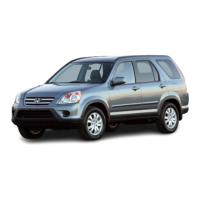


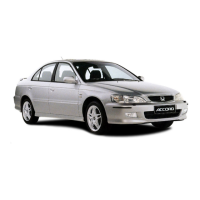
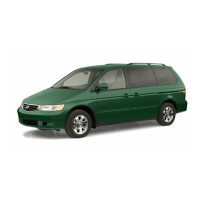
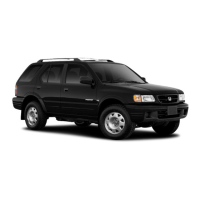

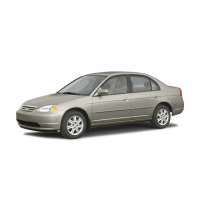
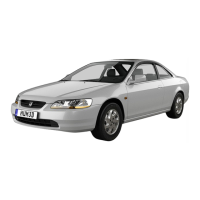

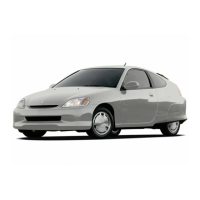

